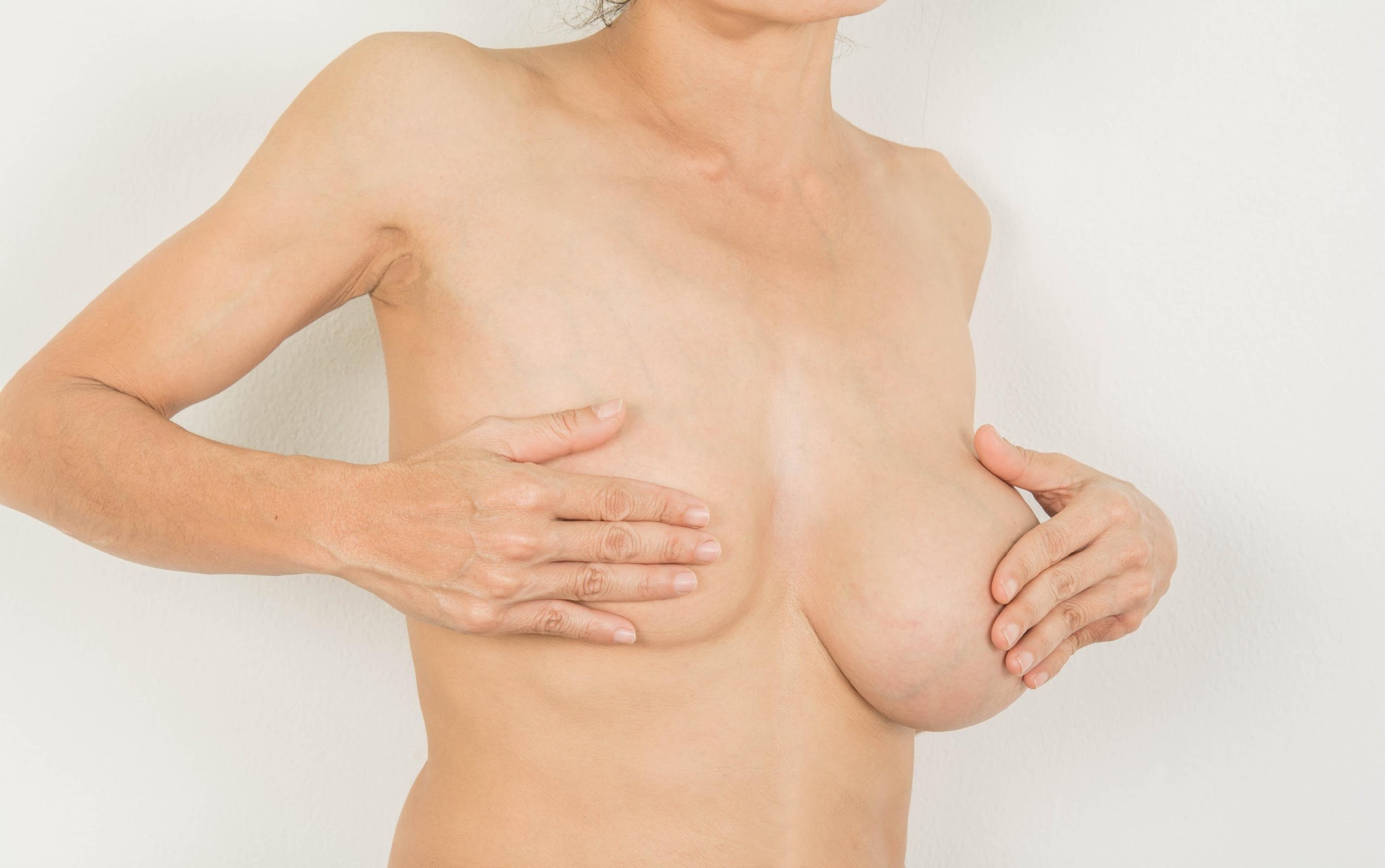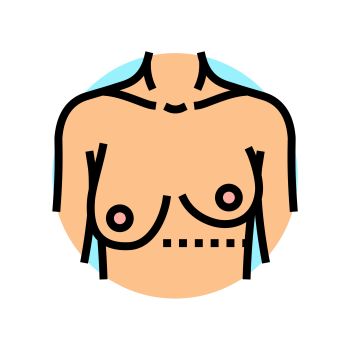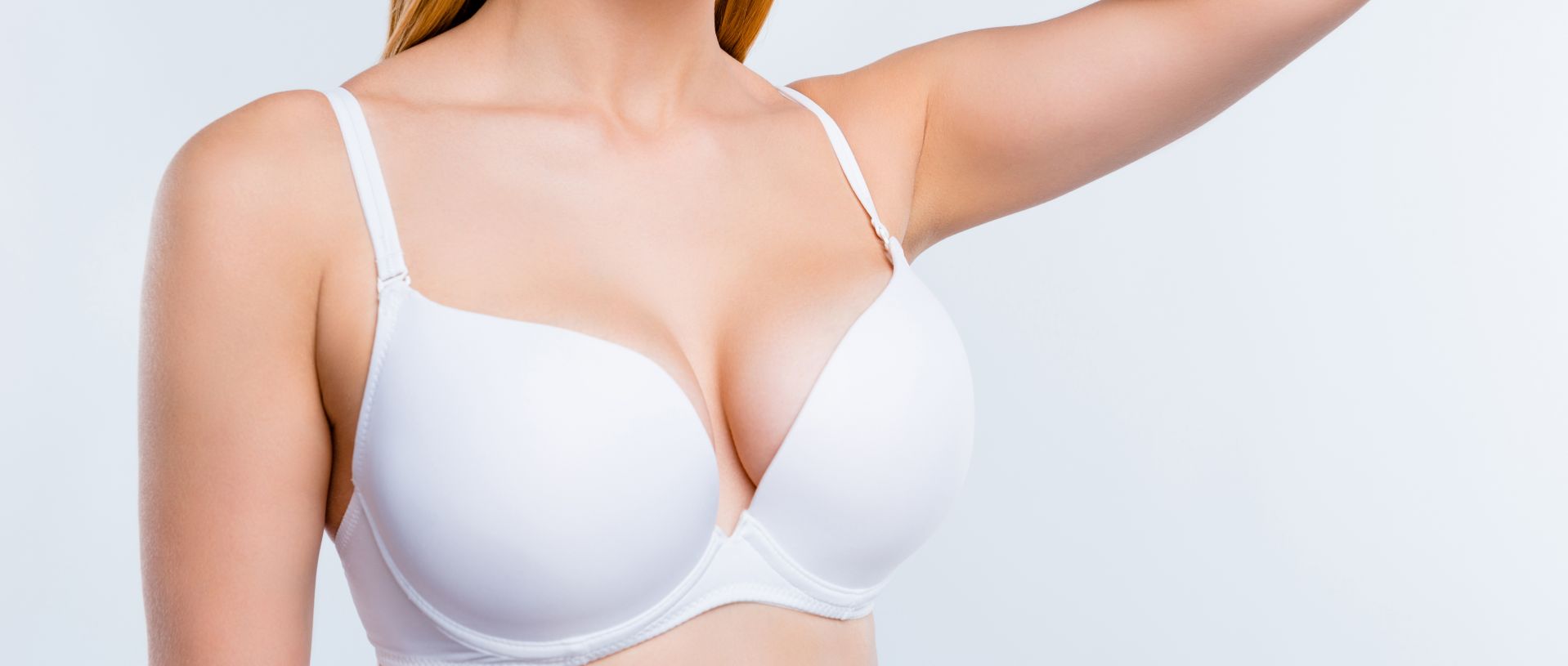Female Pectus Deformity Surgery
Pectus deformity, also called “sunken chest” or “funnel chest,” is an abnormality of the structure of the chest wall. Pectus deformities can affect both men and women. In order to treat this condition and help those who are affected regain their confidence and quality of life, board-certified plastic surgeon Dr. Azouz in Dallas offers specialized procedures. A woman’s pectus deformity can often be treated with different cosmetic procedures than what is performed in men.
What is Pectus Deformity in Women?
 Pectus deformity is defined by an inward or concave shape of the sternum and adjacent ribs, resulting in a sunken appearance of the chest. This anomaly is frequently visible during adolescence, when growth spurts are prominent. It can cause both physical and psychological discomfort, affecting self-esteem and body image. Female pectus deformity, particularly pectus excavatum, can affect breast development and the overall appearance of the chest. Due to the underlying structural abnormality, the sunken chest of pectus excavatum can cause the breasts to appear smaller or less projected. The concavity of the chest can affect the positioning and shape of the breasts, resulting in asymmetry or an uneven distribution of breast tissue. In some cases, the breast tissue appears to be displaced or pushed toward the sides of the chest, resulting in an unnatural or flattened appearance. This can cause significant emotional distress and body image issues affecting feminine aesthetics and self-perception.
Pectus deformity is defined by an inward or concave shape of the sternum and adjacent ribs, resulting in a sunken appearance of the chest. This anomaly is frequently visible during adolescence, when growth spurts are prominent. It can cause both physical and psychological discomfort, affecting self-esteem and body image. Female pectus deformity, particularly pectus excavatum, can affect breast development and the overall appearance of the chest. Due to the underlying structural abnormality, the sunken chest of pectus excavatum can cause the breasts to appear smaller or less projected. The concavity of the chest can affect the positioning and shape of the breasts, resulting in asymmetry or an uneven distribution of breast tissue. In some cases, the breast tissue appears to be displaced or pushed toward the sides of the chest, resulting in an unnatural or flattened appearance. This can cause significant emotional distress and body image issues affecting feminine aesthetics and self-perception.
Corrective surgery for pectus deformity addresses not only the structural chest abnormality but can also help restore a more balanced and aesthetically pleasing breast appearance, improving overall body proportions and self-confidence.
Candidates for Surgery
Candidates for pectus deformity correction surgery in Dallas typically have the following symptoms:
- Breast Asymmetry
- Incomplete formation of the breasts that are deformed by chest wall abnormality
- Tubular breast deformity associated with chest wall deformity
- Emotional distress as a result of the chest’s appearance
Board-certified plastic surgeon Dr. Azouz will conduct a thorough evaluation during your consultation, including medical history, physical examination, and imaging tests, to determine the best treatment plan for you.
Benefits of Correcting Pectus Deformity
Corrective surgery for pectus deformity can provide numerous benefits, including:
- Improved Aesthetic Symmetry: Surgery can assist in achieving balanced and proportional breast size, shape, and positioning, resulting in a more symmetrical and harmonious appearance.
- Improved Body Confidence: Addressing breast asymmetry or a flattened chest can boost self-esteem and body confidence, allowing people to feel more at ease and satisfied with their overall appearance.
- Normalized Breast Projection: Corrective procedures can restore the breasts to their natural projection and contour, enhancing their femininity and contributing to a more youthful and balanced chest profile.
- Easier Clothing Fit: Having more symmetrical and proportionate breasts can make it easier to find well-fitting clothing and bras, eliminating the need for additional padding or special undergarments.
- Positive Psychological Impact: Aesthetic enhancements frequently improve mental well-being, reducing emotional distress and anxiety associated with body image issues.
Pectus Deformity Correction Surgery in Women
 The Nuss and Ravitch procedures are two surgical techniques for correcting female pectus deformities, specifically pectus excavatum. The Nuss procedure involves inserting a curved metal bar beneath the sternum that is then flipped to elevate the depressed chest. The goal of this technique is to reshape the chest wall, and the bar is usually left in place for a few years before being removed. The Ravitch procedure, on the other hand, is an open surgery that involves removing abnormal cartilage and ribs before stabilizing the sternum with internal supports. The severity and complexity of the deformity influence the procedure used.
The Nuss and Ravitch procedures are two surgical techniques for correcting female pectus deformities, specifically pectus excavatum. The Nuss procedure involves inserting a curved metal bar beneath the sternum that is then flipped to elevate the depressed chest. The goal of this technique is to reshape the chest wall, and the bar is usually left in place for a few years before being removed. The Ravitch procedure, on the other hand, is an open surgery that involves removing abnormal cartilage and ribs before stabilizing the sternum with internal supports. The severity and complexity of the deformity influence the procedure used.
Scarring is a common concern for patients following a Nuss or Ravitch procedure to correct the pectus deformity. Both procedures require incisions, which can result in scarring along the chest. The appearance and visibility of scarring can vary depending on factors such as healing, skin type, and the patient’s response to surgery. While some patients find that scars fade with time and become less noticeable, others may seek additional cosmetic procedures to improve symmetry and contour. It is not uncommon for women to desire additional surgeries such as mastopexy (breast lift) or fat grafting to address any residual breast asymmetry or volume irregularities caused by the pectus deformity correction surgery. During your consultation, board-certified plastic surgeon Dr. Azouz can help you make informed decisions about post-operative cosmetic enhancements. Some of the procedures to correct pectus excavatum in females include a breast augmentation, breast reduction, fat grafting, breast lift, breast implant removal, breast reconstruction, nipple reduction, tubular breast correction, breast asymmetry correction, or Poland’s syndrome surgery.
Anesthesia Used During Surgery
Pectus deformity correction surgery is performed under local anesthesia with sedation, ensuring the patient’s comfort and pain-free experience throughout the procedure. Dr. Azouz collaborates with a team of skilled anesthesiologists to ensure the patient’s safety and comfort during the procedure.
Risks of Surgery
While pectus deformity correction surgery is generally safe and effective, there are some risks involved, which include:
- Infection: There is a slight risk of infection developing at the surgical site.
- Pain and Discomfort: Post-surgery, patients may experience some pain and discomfort during the healing process. Dr. Azouz will prescribe pain medications before surgery to help minimize pain or discomfort.
- Scarring: The incisions made during surgery will leave scars, but they often fade over time. Additionally, Dr. Azouz utilizes plastic surgery techniques to camouflage scarring whenever possible.
Surgeries that Can be Combined for Pectus Excavatum
Additional procedures can be combined with pectus deformity correction surgery in some cases to address specific concerns or optimize results. During the consultation process, Dallas plastic surgeon Dr. Azouz will thoroughly assess each patient’s unique situation and discuss any additional surgeries that may be beneficial. The following are some examples of common additional surgeries that may be considered:
- Breast Augmentation or Reduction: Breast augmentation or reduction surgery can be done in conjunction with pectus deformity correction to improve overall chest symmetry and aesthetic balance.
- Liposuction or Body Contouring: Liposuction or body contouring procedures can be used to remove excess fat or irregularities in the surrounding areas, improving the overall appearance of the chest and torso.
- Scar Revision: If scarring from previous surgeries or the pectus deformity correction procedure is a concern, scar revision techniques can be used to reduce the visibility of scars and improve their appearance.
- Mastopexy (Breast Lift): A breast lift can improve breast symmetry and contour by correcting sagging or drooping breasts caused by pectus deformity.
- Nipple Reduction/Augmentation: A nipple reduction or augmentation can help achieve better symmetry between the nipples and the overall breast appearance by reducing or enhancing the size and shape of the nipples.
- Fat Grafting: By utilizing the patient’s own fat from donor areas to add volume and contour to the breasts, fat grafting can help create a more balanced and proportionate chest profile.
Why Do Women Choose Breast Augmentation after Sternal/Rib Surgery?
Women often have concomitant breast deformities, including breast hypoplasia (small breasts) or asymmetry. Many women find that breast augmentation after bar placement or removal can improve the chest’s look and symmetry and conceal or camouflage contour irregularities.
Pectus Deformity Correction Surgery in Dallas
Pectus deformity can have a significant impact on a woman’s physical and emotional well-being. However, with Dr. Azouz’s expertise and specialized surgical techniques, pectus deformity can be effectively corrected, providing a variety of benefits such as improved breathing, increased self-esteem, and increased physical activity.
If you are considering pectus deformity correction surgery in Dallas, Dr. Azouz’s expertise and dedication to patient satisfaction make him an excellent choice. To schedule a consultation with Dr. Azouz, call (972) 702-8888 today.
Before and After

This young female complained of a “pigeon chest,” also known as a pectus carinatum deformity. She underwent subpectoral placement of 375cc saline implants with Dr. Solomon Azouz. This also helped to increase breast volume and enhance upper pole fullness for a more balanced silhouette.

This young female complained of a “pigeon chest,” also known as a pectus carinatum deformity. She underwent subpectoral placement of 375cc saline implants with Dr. Solomon Azouz. This also helped to increase breast volume and enhance upper pole fullness for a more balanced silhouette.

This young female complained of a “pigeon chest,” also known as a pectus carinatum deformity. She underwent subpectoral placement of 375cc saline implants with Dr. Solomon Azouz. This also helped to increase breast volume and enhance upper pole fullness for a more balanced silhouette.

This young female complained of a “pigeon chest,” also known as a pectus carinatum deformity. She underwent subpectoral placement of 375cc saline implants with Dr. Solomon Azouz. This also helped to increase breast volume and enhance upper pole fullness for a more balanced silhouette.
Frequently Asked Questions
Some patients report mild discomfort after surgery which is controlled with prescribed medications. Dr. Azouz uses local anesthesia with sedation which can help with pain during the procedure and for up to 24 hours after surgery.
Although recovery times vary depending on the specific procedure, most people are able to return to their regular activities in a matter of weeks. It’s necessary to avoid certain activities and intense exercise during the initial phase of recovery.
Dr. Azouz camouflages the incision line to help minimize scarring. During recovery, Dr. Azouz will also give recommendations as the scar fades and becomes less noticeable.
The goal is to achieve long-lasting results that give the chest an appearance that is more balanced and aesthetically pleasing.
During your consultation, board-certified plastic surgeon Dr. Azouz will give a personalized quote. The cost of surgery can vary depending on surgical fees, anesthesia, facility fees, and any necessary equipment.
